
Hamadryas Baboon
Hamadryas Baboon
Hamadryas Baboon
The Hamadryas Baboon is not native to Japan and can be considered an unfamiliar monkey. Therefore, it is somewhat popular in zoos due to its rarity, and many tourists stop to see it. It has a slightly comical face shape, but despite its appearance, it has a rough temperament. The ecology of the Hamadryas Baboon, which is generally not well known. Let’s take a look at what kind of creature it is together.
Hamadryas Baboon Basic Infomation
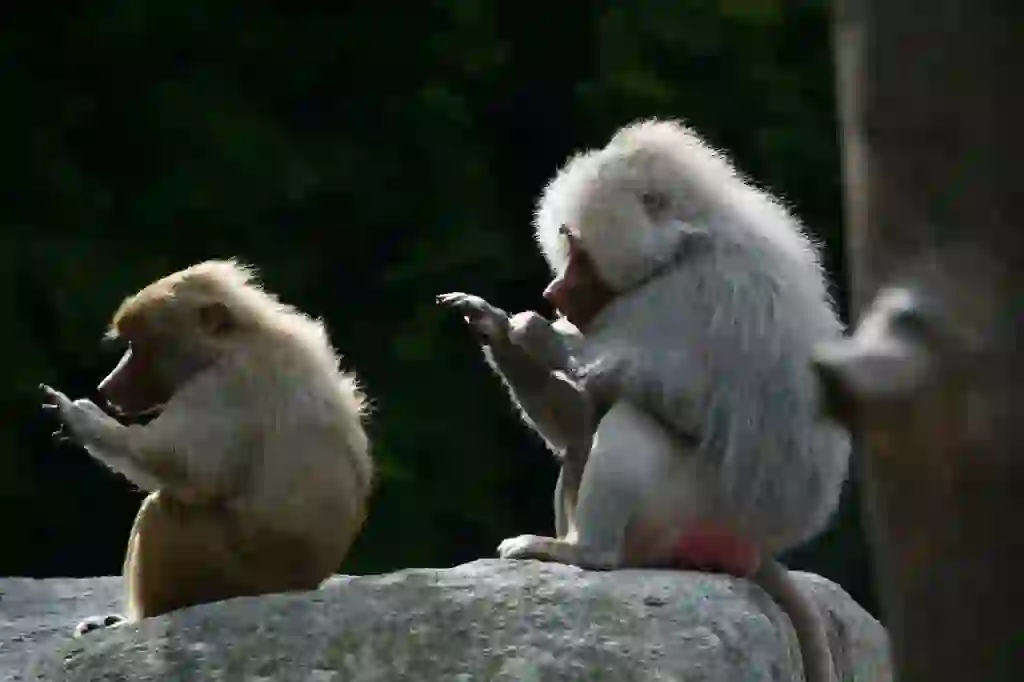
Primate Cercopithecidae Baboon genus.
Male : length 70-80cm, weight 20kg.
Female : length 50-60cm, weight 10kg.
The Hamadryas Baboon is a monkey with a large difference in sex. As can be seen from its body length and weight, males are about twice the size of females.
The color of the child’s hair is brown and there is no difference between males and females. However, when they become adults, males change to gray and females remain brown. Because the appearance of males and females is so different, when the Hamadryas Baboon was first seen, it was thought that males and females were different species of monkeys.
There is no hair on the face and buttocks, and the skin is exposed. The face protrudes at the mouth and the eyes are deeply sunken.
Like the Japanese macaque, it has cheek pouches that can temporarily store food. The capacity of the cheek pouch is large and can store the same amount as the stomach. When Hamadryas Baboon eats, it usually does not eat immediately on the spot. This is because there is a risk of being attacked by predators when eating because it becomes vulnerable. Therefore, they put it in their cheek pouches and move to a safe place before eating.
Hamadryas Baboon is distributed from eastern Africa to Saudi Arabia. They inhabit dry mountainous areas and tend to prefer grasslands and rocky areas. It is a harsh environment for living things, but Hamadryas Baboon can be said to be a higher-level predator.
Hamadryas Baboon is a highly social creature.
It forms a group with one male and multiple females and children as a polygamous animal. This is the smallest unit of the group and is called a unit. Units gather to form a collective called a clan, and the basic society of Hamadryas Baboon is called a band, which is a group of clans. During the day, they are active in units, which are the smallest units of the group, but at night, bands gather in safe places to protect themselves from external enemies.
Hamadryas Baboon Q&A

What is the relationship between Hamadryas Baboon and humans?
Hamadryas Baboon has no deep connection with humans today.
However, in ancient Egypt, Hamadryas Baboon was worshiped as a god or messenger of the gods. As evidence, it is depicted on the walls of Egyptian temples and on old paper called papyrus. It seems to have been kept in temples, and Hamadryas Baboon mummies have also been found.
However, Hamadryas Baboon is extinct in modern Egypt and its glory cannot be confirmed.
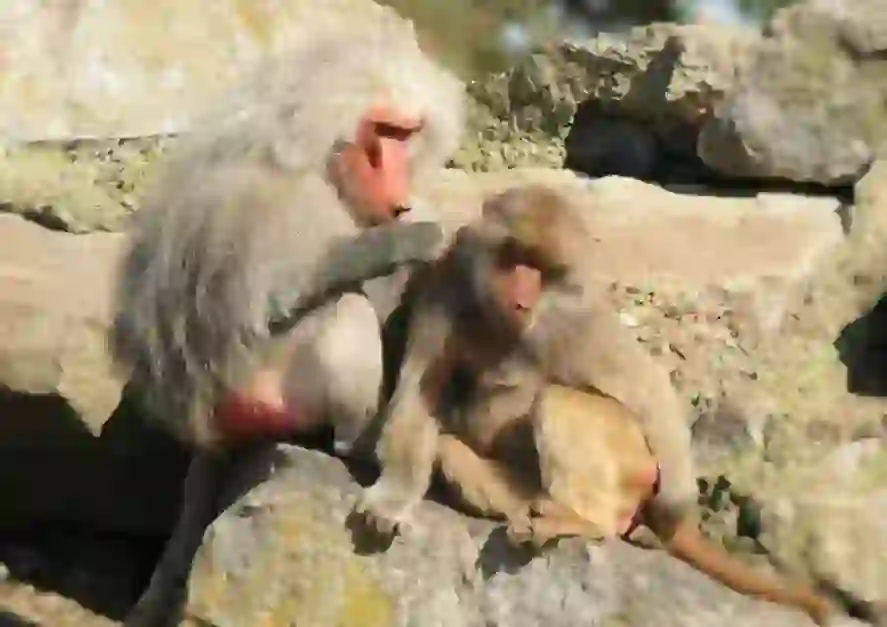
What is the origin of the name Hamadryas Baboon?
Although it is called “Hamadryas Baboon” in English, it is actually called “mantohihi” in Japanese. First of all, why is it called “mantohihi” in Japanese? We will introduce the origin of the name. The name “mantohihi” comes from its appearance. The body hair of males, especially the hair on the side of the head and shoulders, is elongated and looks like a mantle (manto), so it was named.
The English name is also called “Sacred baboon”, which means “sacred monkey” when translated into Japanese. It is said that it was named after being considered sacred in ancient Egypt.
By the way, the word “hihi” for the monster that has been handed down in Japan is derived from the word “hihi”. hihi is a large monkey-like monster. The facial features of hihi are completely different from those of Japanese macaque, so it may have felt like a monster.
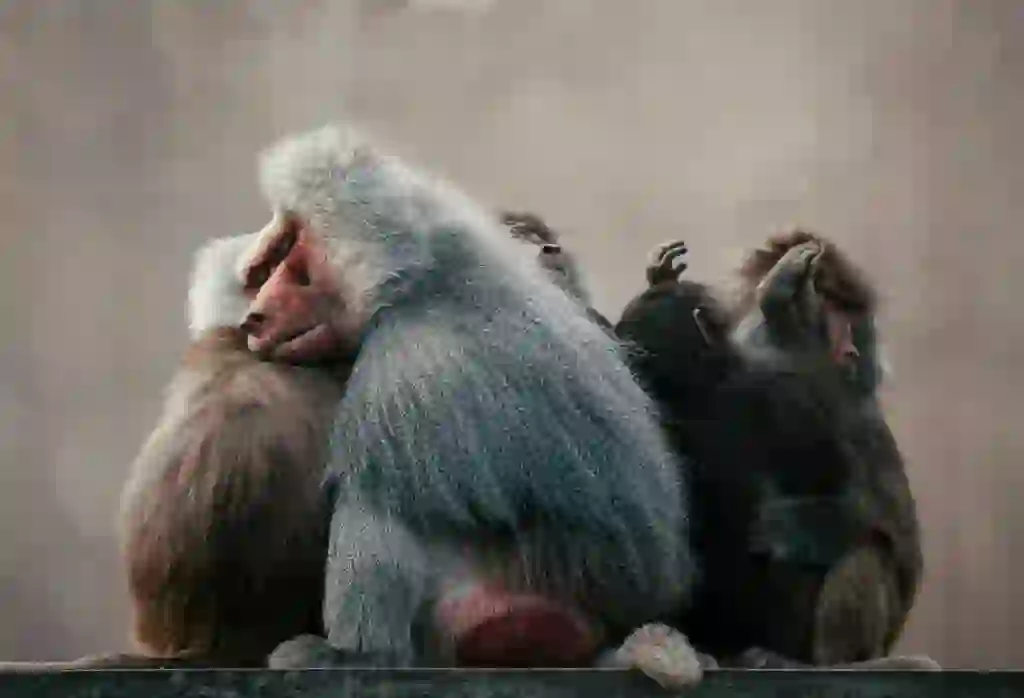
What does Hamadryas Baboon eat?
Hamadryas Baboon in captivity is mainly fed fruits and vegetables.
On the other hand, wild Hamadryas Baboon is very omnivorous, eating insects, small reptiles, nuts, fruits and other things. The area where Hamadryas Baboon lives is not an environment that is blessed for living things.
Therefore, it is probably eating what it sees to get nutrients rather than eating it as a favorite food.
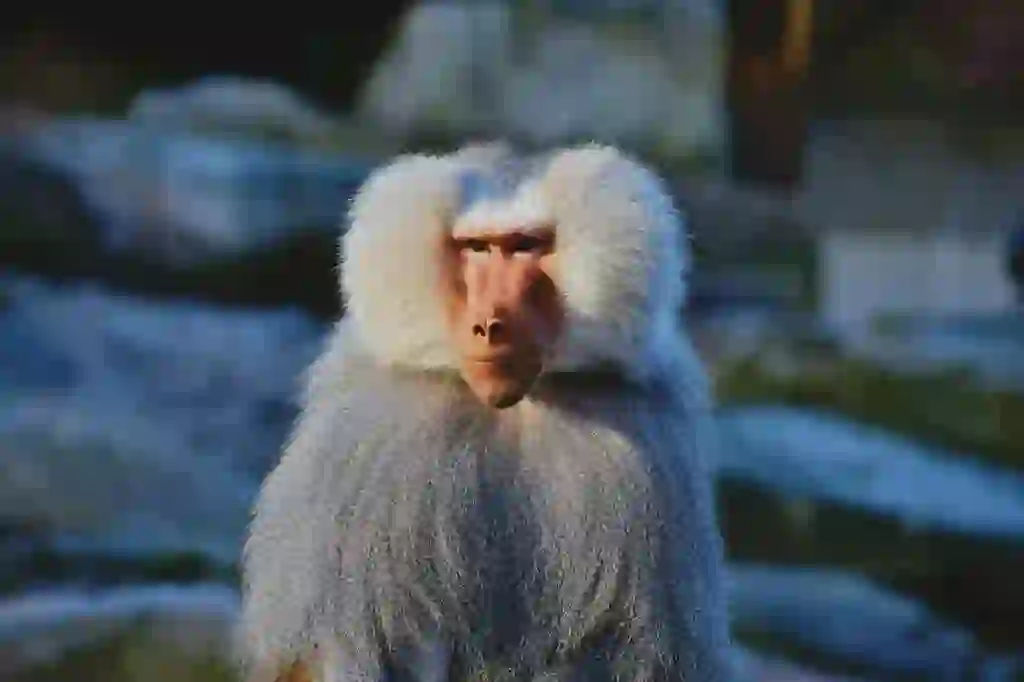
Why is Hamadryas Baboon's butt red?
Hamadryas Baboon has no hair on its face and buttocks, and you can see the exposed red skin. The true identity of the red color is blood flowing through the capillaries, and the skin on Hamadryas Baboon’s buttocks is thin enough to see through the color of the blood.
Also, the redness of the buttocks is an appeal point that represents the estrus period. The larger and redder the buttocks, the more attracted females are. In addition, it is considered a boss’s container that is easy to stand out in fights between males, and if it is not good enough, it cannot become a boss.
By the way, there are many types of monkeys, but only Japanese macaque and baboons have red buttocks. There is an unexpected common point, and it feels a little familiar.
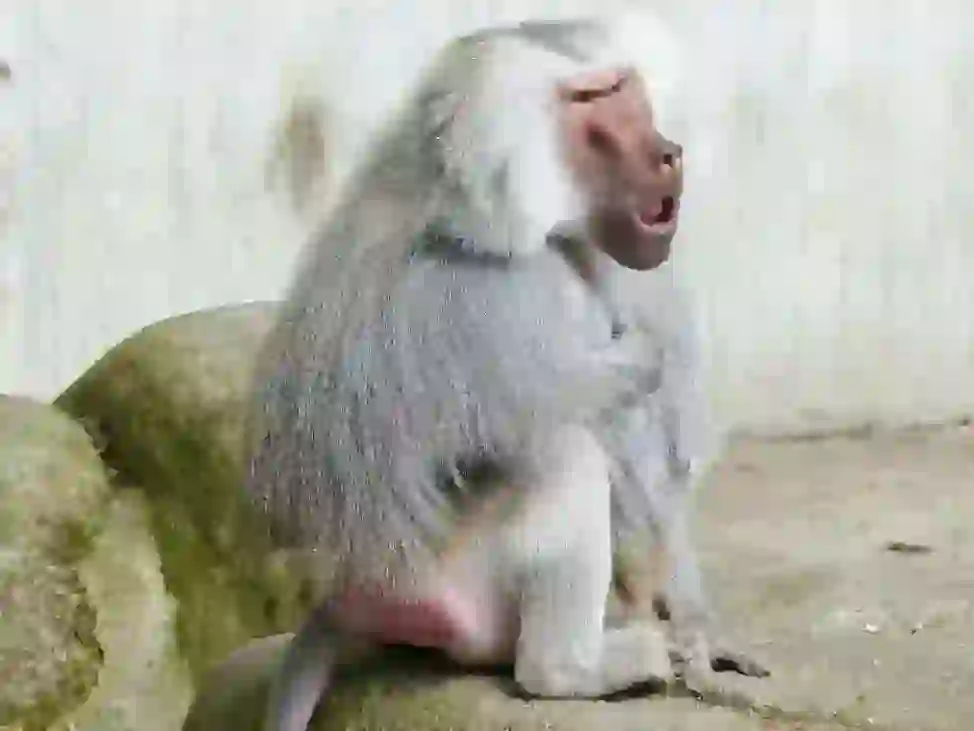
Hamadryas Baboon yawns a lot, but is he always sleepy?
When humans yawn with their mouths wide open, they are usually feeling sleepy. Like humans, Hamadryas Baboon also yawns. However, the frequency is not comparable to that of humans.
Hamadryas Baboon yawns not only when feeling sleepy, but also as a threat. They intimidate their opponents by exposing their fangs. If you look closely, you can see that the yawn of intimidation emphasizes the fangs with eyes open.
Especially Hamadryas Baboon in the zoo often yawns, but it is considered that they are intimidating humans who are spectators. They are trying to drive away noisy humans by intimidating them.

What is the difference between Hamadryas Baboon and a mandrill?
Among the primates, there is also a species called mandrill. The two species are often confused because their names are similar, but they are actually completely different creatures.
From a taxonomic point of view, the mandrill belongs to the mandrill genus, not the baboon genus. Also, although the names are similar, if you know the meaning, you can tell the difference.
The origin of the name Hamadryas Baboon is “Hamadryas + Baboon”, while mandrill is “Man + drill”. Here, Man refers to humans and drill refers to creatures of the mandrill genus. In other words, mandrill means “drill like a human”. The way they were named is a little different.
Also from an ecological point of view, Hamadryas Baboon and mandrill are different. Although most Hamadryas Baboon live on the ground, mandrills sometimes sleep in trees.
The biggest difference is appearance. If you compare Hamadryas Baboon and mandrills side by side, it is clear at a glance that the face and buttocks of mandrills are very colorful with blue and red colors. There is no mistaking it at first glance.
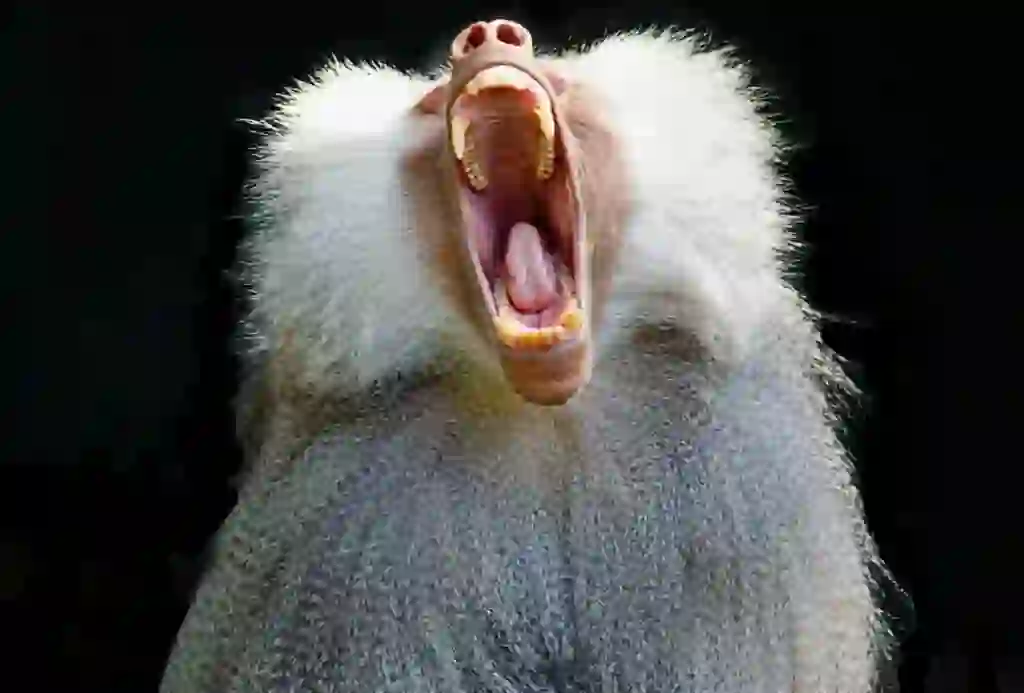
What is the personality of Hamadryas Baboon?
Not limited to Hamadryas Baboon, the entire baboon family is rough and violent. Their ferocity is such that it is said that if lions and leopards disappear, baboons will come. With strong power and sharp fangs, they fight without fear even if the opponent is a predator. Of course, there are cases where they kill predators.
Also, Hamadryas Baboon is polygamous and forms a harem. If a female tries to leave the harem, it is said that they bite her neck to keep her from leaving. However, because the biting force is too strong, there are even cases where they kill her.
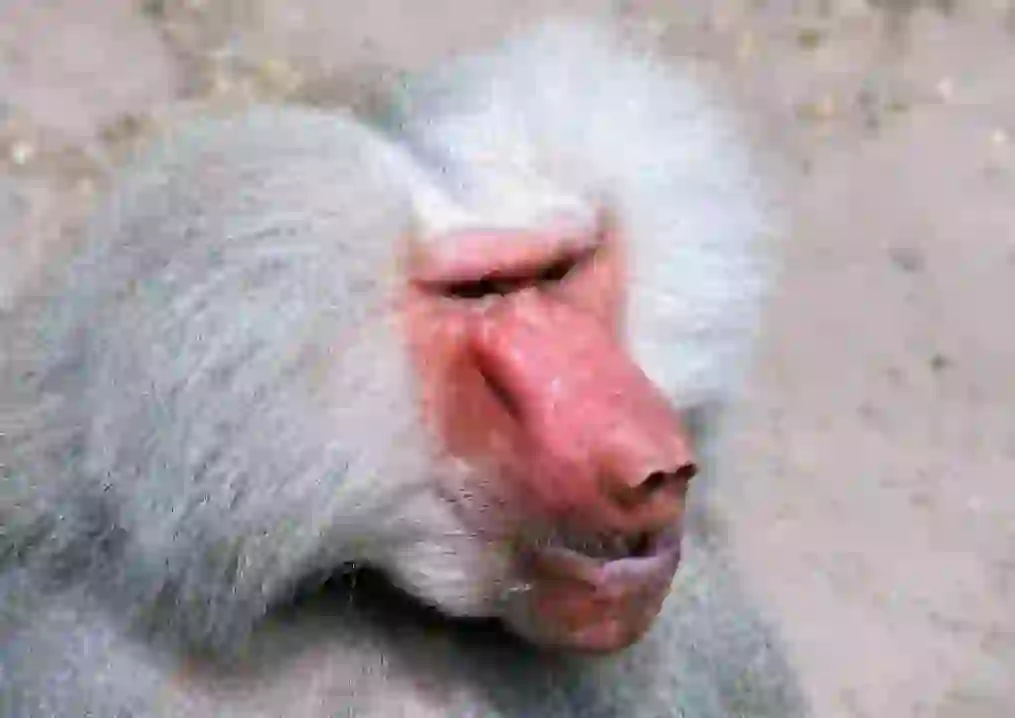
Does Hamadryas Baboon have any natural enemies?
Hamadryas Baboon is said to have leopards and lions as natural enemies, but it is believed that they are already extinct in the area where Hamadryas Baboon currently lives. Therefore, it is said that there are no major enemies, but they are attacked by hyenas, large snakes, and birds of prey such as eagles.
Of course, Hamadryas Baboon does not just take it silently and is believed to turn to counterattacks and drive away their opponents.

Would you like to become a part of the 'Animalbook.jp'?
Turn your knowledge into Q&A and share it with the world. ※Publication will be activated after purchase. Let's share information together!
Hamadryas Baboon Type of List
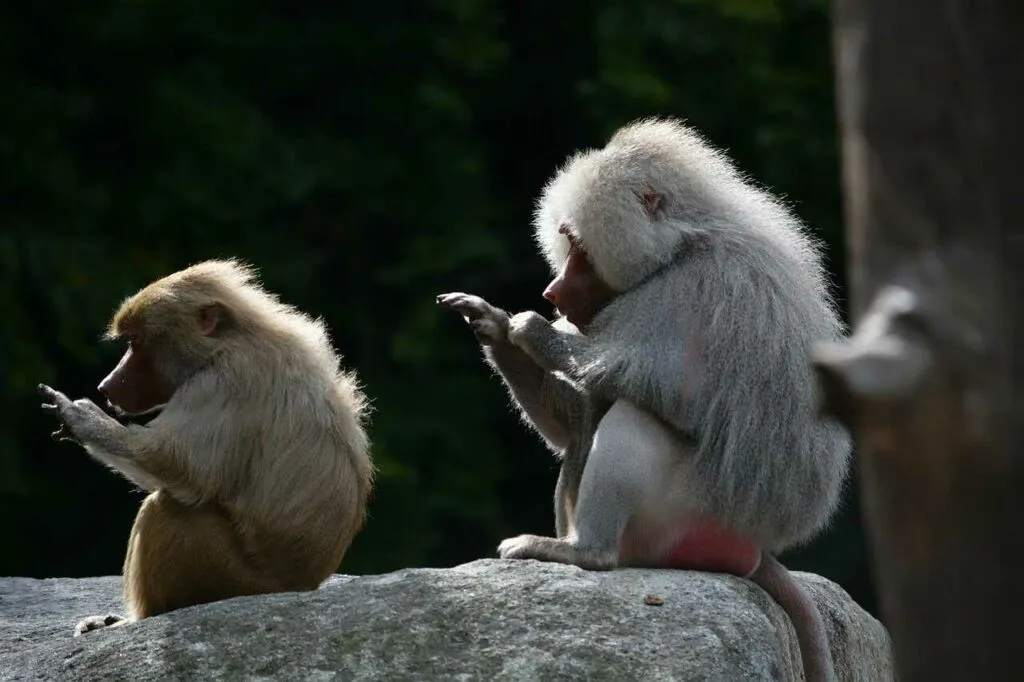
There is no species called Hamadryas Baboon. Here are the types of baboons that belong to the baboon genus to which Hamadryas Baboon belongs.
- Hamadryas Baboon.
- Anubis Baboon.
- Yellow Baboon.
- Guinea Baboon.
- Chacma Baboon.
Information
Congratulations! You are the first commenter!

Create Your Favorite List!
Hamadryas Baboon
Save the animals you love! Build your own list to quickly revisit your favorites later.

Would you like to leave a comment?
※Please note: This is for the purchase of rights to post comments within the article.
Find Your Favorites!
Our shop offers a unique and attractive selection of goods themed around various animals.
Hamadryas Baboon References
Hamadryas Baboon Introduction of media used
出典:https://www.pexels.com/ja-jp/photo/855077/

出典:https://pixabay.com/images/id-5961929/

出典:https://www.pexels.com/ja-jp/photo/6575076/

出典:https://unsplash.com/photos/F_ZeF3GK5VQ

出典:https://www.pexels.com/ja-jp/photo/2271380/

出典:https://pixabay.com/images/id-567300/

food
出典:https://www.pexels.com/ja-jp/photo/2-62687/
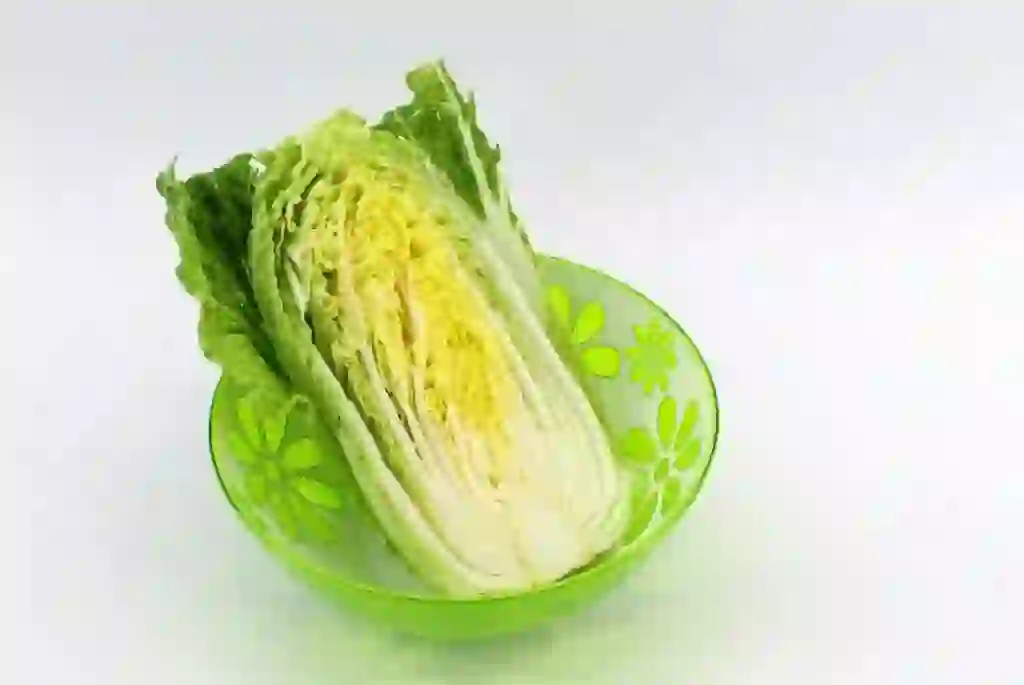
food
出典:https://pixabay.com/images/id-4201749/

出典:https://pixabay.com/images/id-1714233/

出典:https://pixabay.com/images/id-4805841/

出典:https://unsplash.com/photos/_oLZmxGTZkE
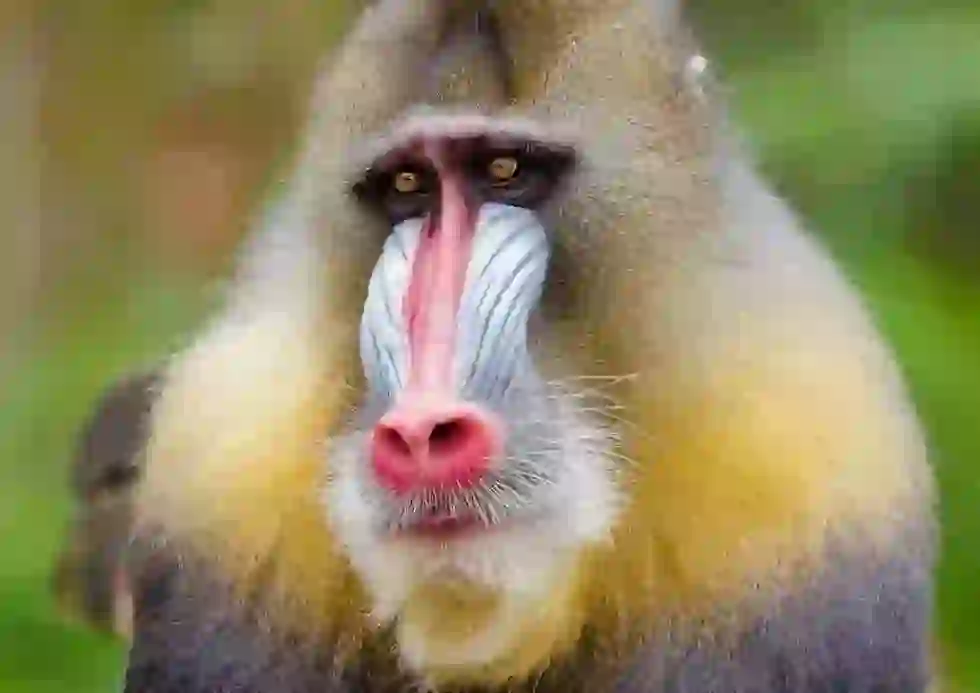
similar
出典:https://pixabay.com/images/id-1194343/
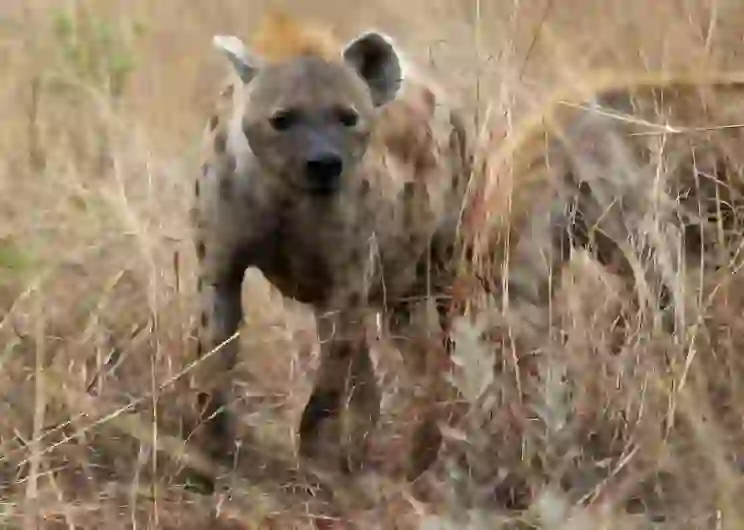
enemy
出典:https://www.pexels.com/ja-jp/photo/4255183/
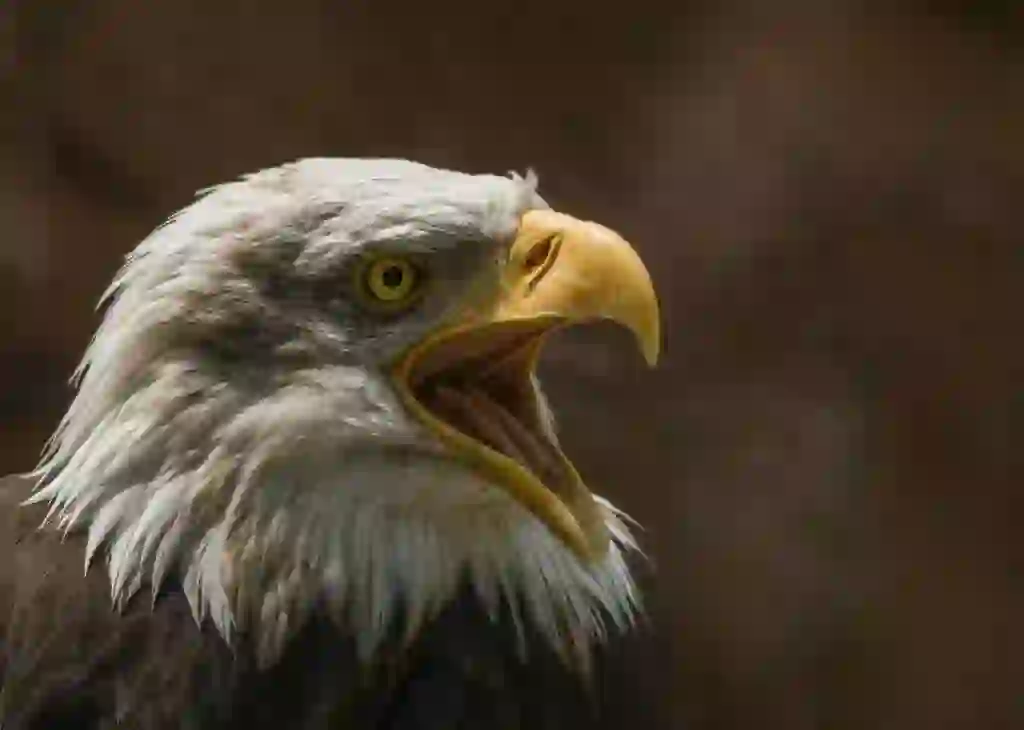
enemy
出典:https://www.pexels.com/ja-jp/photo/416191/

Help Enrich Our Animalbook.jp with Your Media!
We are constantly looking to expand and enrich our Animalbook.jp with amazing photos and videos of animals. If you have any media that you'd like to share, please contribute and help us showcase the beauty and diversity of the animal kingdom. Your submissions will be credited and featured in our encyclopedia, reaching a wide audience of animal lovers.



















